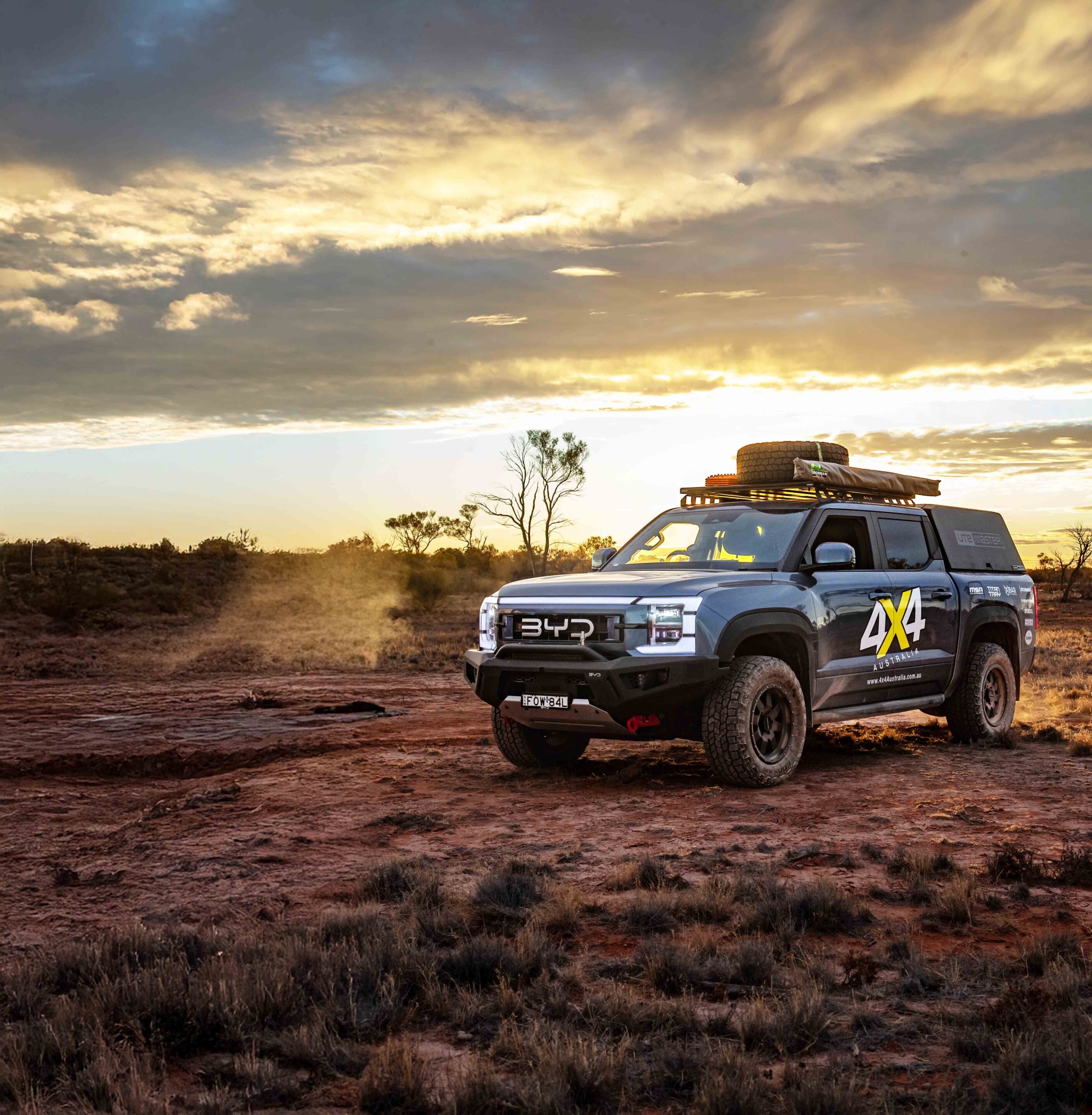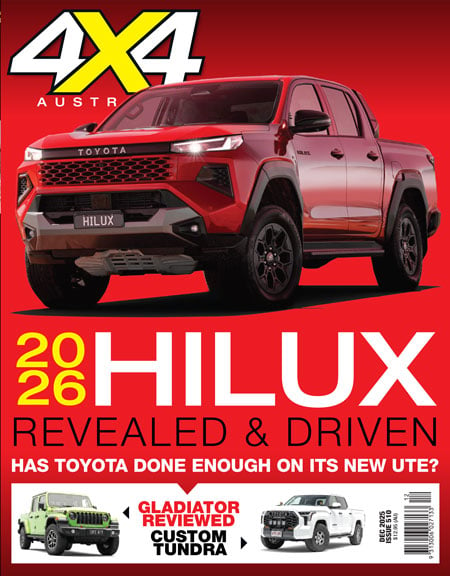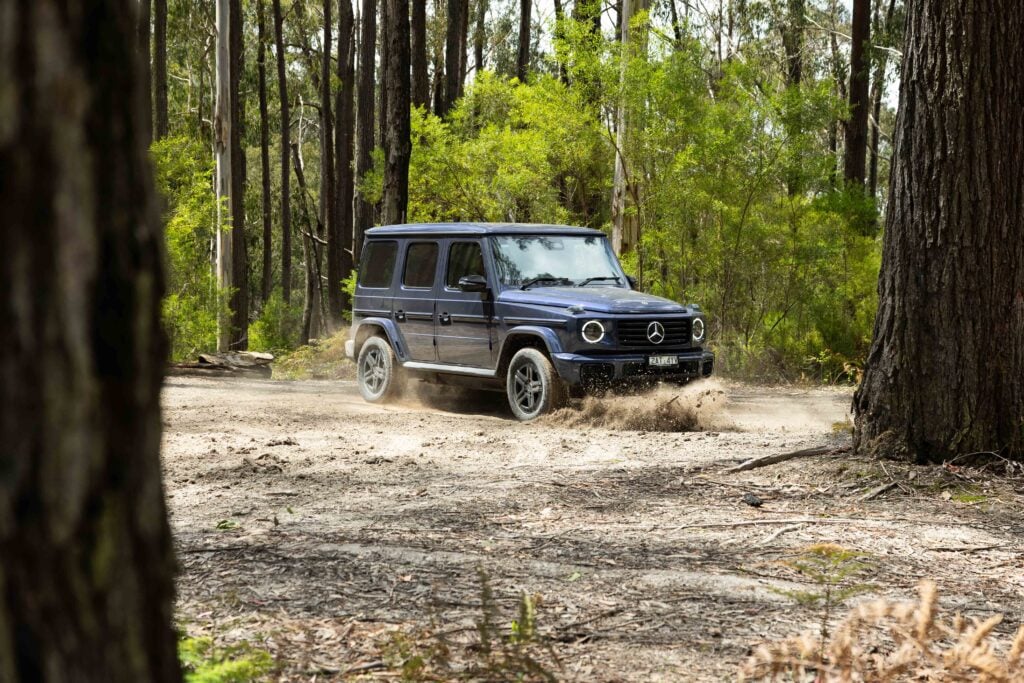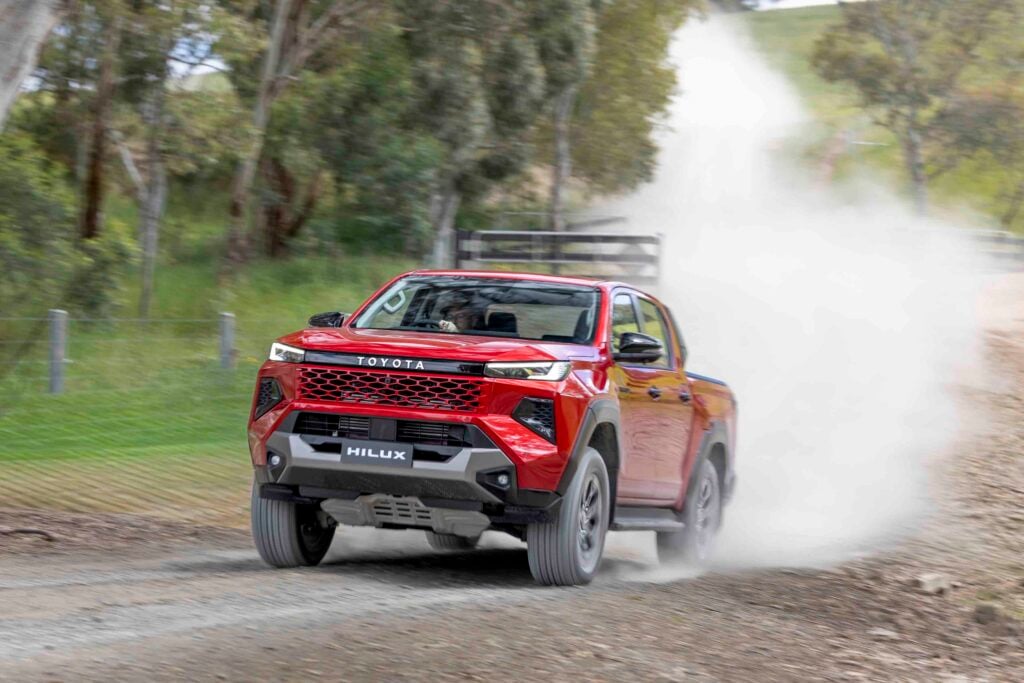Things we like
- Super comfortable with intelligent cruise control for relaxed driving
- Powers accessories easily from onboard battery and outlets
- Instant torque makes dune climbs effortless
Not so much
- Small fuel tank limits range; needs 20-40L more capacity
- Long wheelbase and battery cause hang-ups on dunes
- Poor low-speed torque and traction hurt recovery efforts
The Simpson Desert doesn’t care about your vehicle’s badge, spec sheet or country of origin. It doesn’t matter if it’s a hybrid, electric or runs on orange peel.
As the largest parallel sand dune desert on Earth, the Simpson has been luring off-roaders into its sandy embrace for decades. So when I announced I’d be taking the BYD Shark across it, let’s just say a few eyebrows were raised. But this trip wasn’t just about me. The real story was setting up BYD’s hybrid AWD ute as a self-sufficient tourer – and seeing if it could handle a full crossing of the Simpson Desert.
To give the BYD a fighting chance, it was fitted out with a range of touring and recovery gear. Ironman 4×4 supplied the bullbar, suspension upgrade, recovery points and driving lights. The build also included Cooper tyres on Raceline wheels, a Utemaster canopy, MSA drawers and DropSlide, a 65-litre Evakool fridge, ICOM UHF radio, Hayman Reese X-Bar, ROLA Titan Tray roof rack, and a set of Maxtrax.
As a precaution, I added our kitted LandCruiser 79 Series to the convoy for back up with my mate Max behind the wheel. He’s a LandCruiser tragic and one of the few people I trust when it comes to remote travel. We’ve spent plenty of nights under the stars, bogged in sand dunes and fixing gear in the middle of nowhere. This time though, we had a new adventure: Melbourne to Mount Dare, then across the French Line to the QAA Line – a full Simpson crossing with two very different rigs.
JUMP AHEAD
- Fuel economy tested
- Into the Simpson Desert
- Wading through Eyre Creek
- Comfort versus capability
- Final verdict
- Specs
Fuel economy tested on the road to the Simpson Desert
We rolled out of Melbourne with the BYD Shark and the 79 Series running side by side. First stop: Adelaide – a solid shakedown run and a chance to gather some real-world fuel economy figures.
At urban and regional speeds, the BYD Shark impressed, returning 14.5L/100km compared to the Cruiser’s 15.5L/100km. Pretty close, but the Shark’s hybrid system handled stop–start traffic far more efficiently. I’ll be honest – at times, the Shark made the Cruiser feel like a lumbering old tractor.
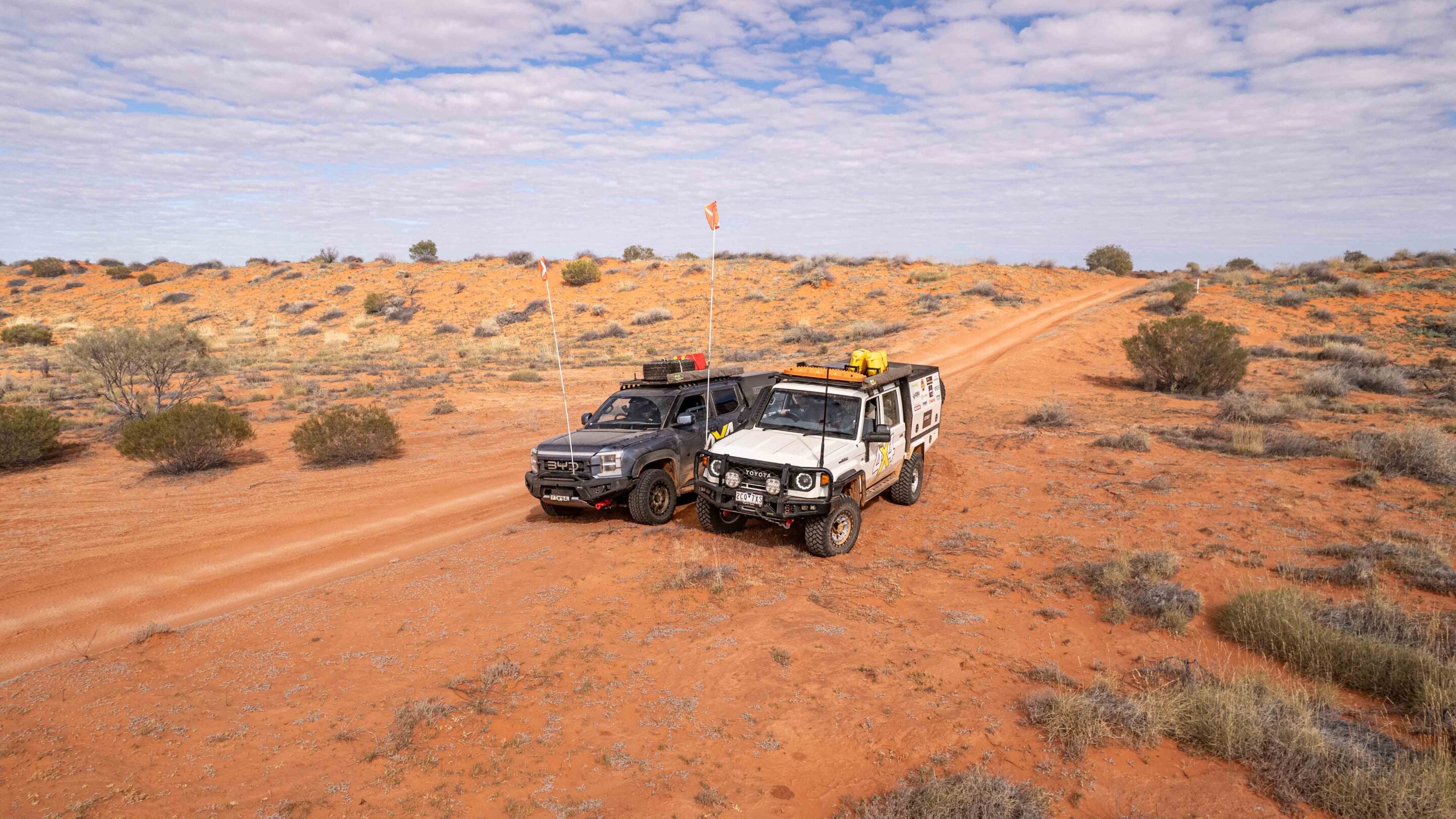
Once we hit the Stuart Highway and started cruising at 110–130km/h, the cracks began to show in the BYD’s performance. The Shark’s fuel consumption climbed, peaking between 20-23L/100km. It wasn’t entirely unexpected — hybrid systems like BYD’s aren’t optimised for long-distance, high-speed highway runs. Once the battery ran low, the petrol engine was doing all the work — and you could feel it.
Still, by the time we pulled into Mount Dare — that iconic last pub before the sand begins — the Shark was holding its own. Unconventional? Absolutely. But dead in the water? Not yet.
BYD Shark vs Toyota 79 Series: Simpson Desert showdown
At Mount Dare, we loaded up with 10 jerry cans of fuel – a mix of petrol for the BYD and diesel for the Cruiser – plus spare tyres, recovery gear, fridges packed with supplies, a month’s worth of Victoria’s Best, and just enough confidence to give it a red-hot crack.
Tyre pressures were dropped to around 20-25psi in preparation for the soft, sandy tracks ahead. The first stretch from Mount Dare to Dalhousie Springs was rougher than we remembered. Deep ruts, sharp rocks and heavy corrugations quickly made it clear that the Shark’s lower ground clearance was going to be its Achilles heel.
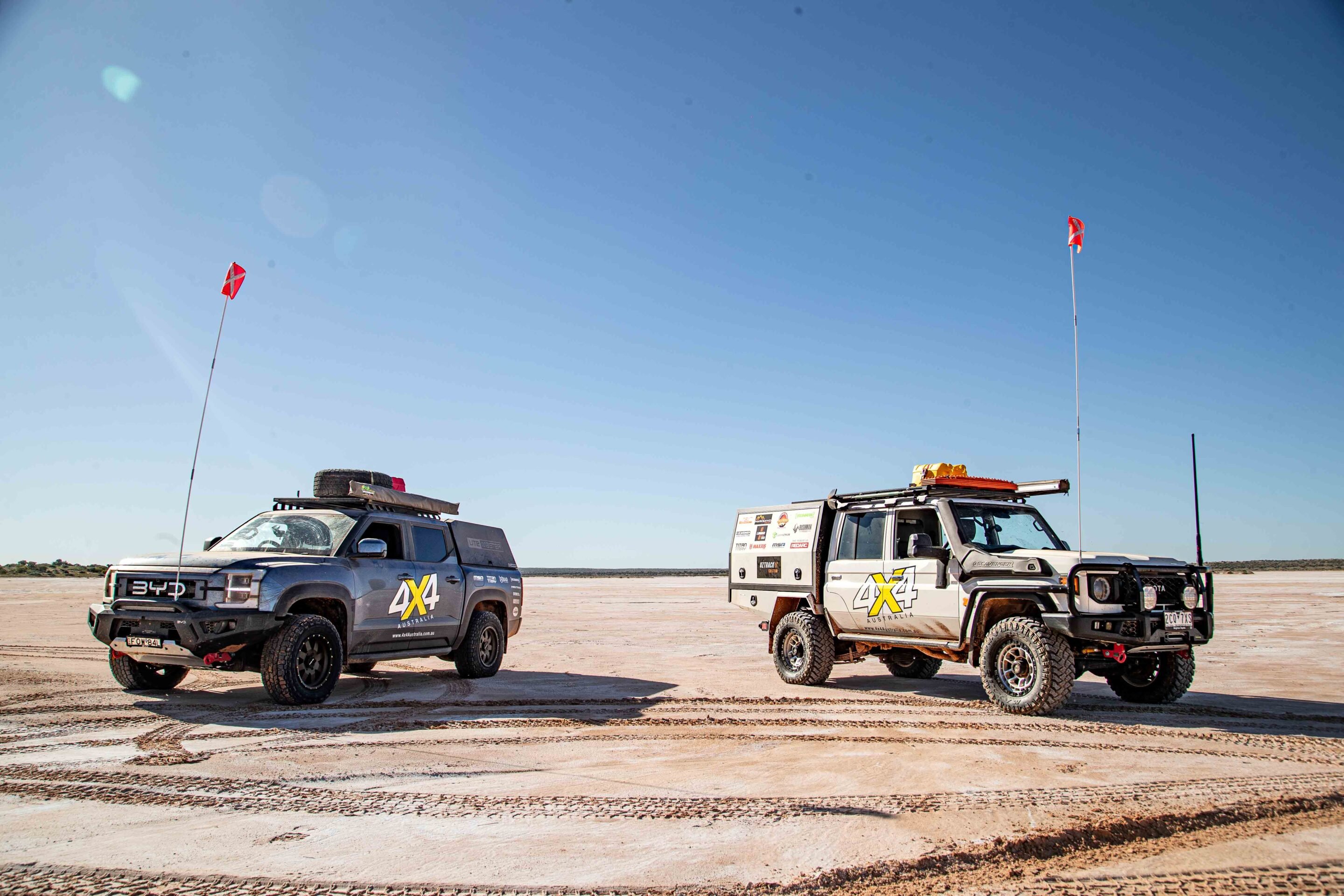
The battery pack mounted under the chassis doesn’t leave much room to play with, and we had a few tense moments scraping and nudging our way over obstacles. It even got hung up in the sand – so we rolled on with fairly low expectations.
The BYD’s electronic traction control proved to be another weak point – it sometimes got confused in the loose sand. Momentum was critical for dune climbs; if you stopped halfway, you were digging holes in no time. Max got into a rhythm in the Cruiser, pulling ahead to spot me through the trickier sections and occasionally laying down Maxtrax to give the hybrid a fighting chance.
Wading through Eyre Creek: Tackling a water crossing
With floodwaters from further north pushing down through the Simpson in the weeks before our crossing, we expected lower water levels at the Eyre Creek bypass.
As always, Mother Nature had other ideas. What looked like a straightforward water crossing quickly turned into a nerve-racking test of will – and waterproofing. First up was the trusty LandCruiser. It’s a proven desert beast – but even it wasn’t immune to the deepening waters at Eyre Creek. The good old tractor turned submarine for a moment, with water lapping over the bonnet before it climbed out the other side. A solid reminder that no matter how prepared you think you are, the desert always has a curveball up its sleeve.
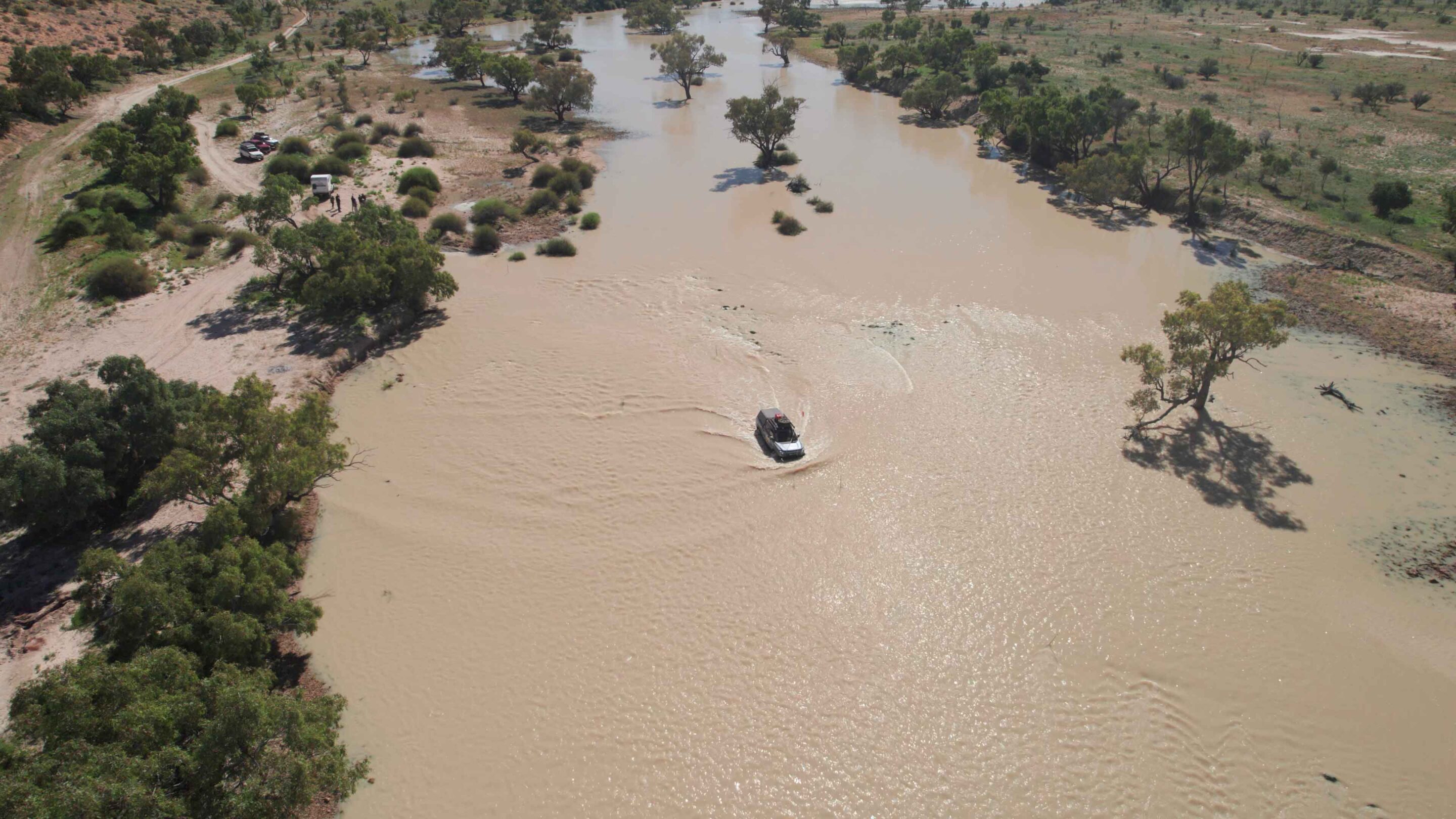
Then came the BYD Shark. I’ll admit, I was a little nervous. A hybrid off-roader with a claimed wading depth of 700mm? It sounded like a recipe for disaster. But after walking the crossing and finding a solid line, I thought, let’s give this a go. Just to be safe, we hooked up a soft shackle and snatch strap to the front – ready to go in case things got sketchy.
I entered the water with my heart in my mouth, watching it rush over the bonnet, but the Shark kept its cool, effortlessly driving the crossing. I made it to the other side without needing a swim, much to the amazement of the cheering crew on the other side. It felt like an absolute win!
Beyond that crossing, the Shark proved itself in the desert as a proper 4×4. Sure, it doesn’t have a massive fuel tank, but with a fuel economy of around 20L/100km, it proved more than capable of keeping up with the big boys. And comfort? Let’s just say if I had to choose between the LandCruiser’s rattling interior and the Shark’s plush ride, I’d be hopping into the Shark every time. The sound system is better than anything I’ve heard on the tracks, and don’t even get me started on the seats… it’s like driving a luxury SUV while tackling Big Red.
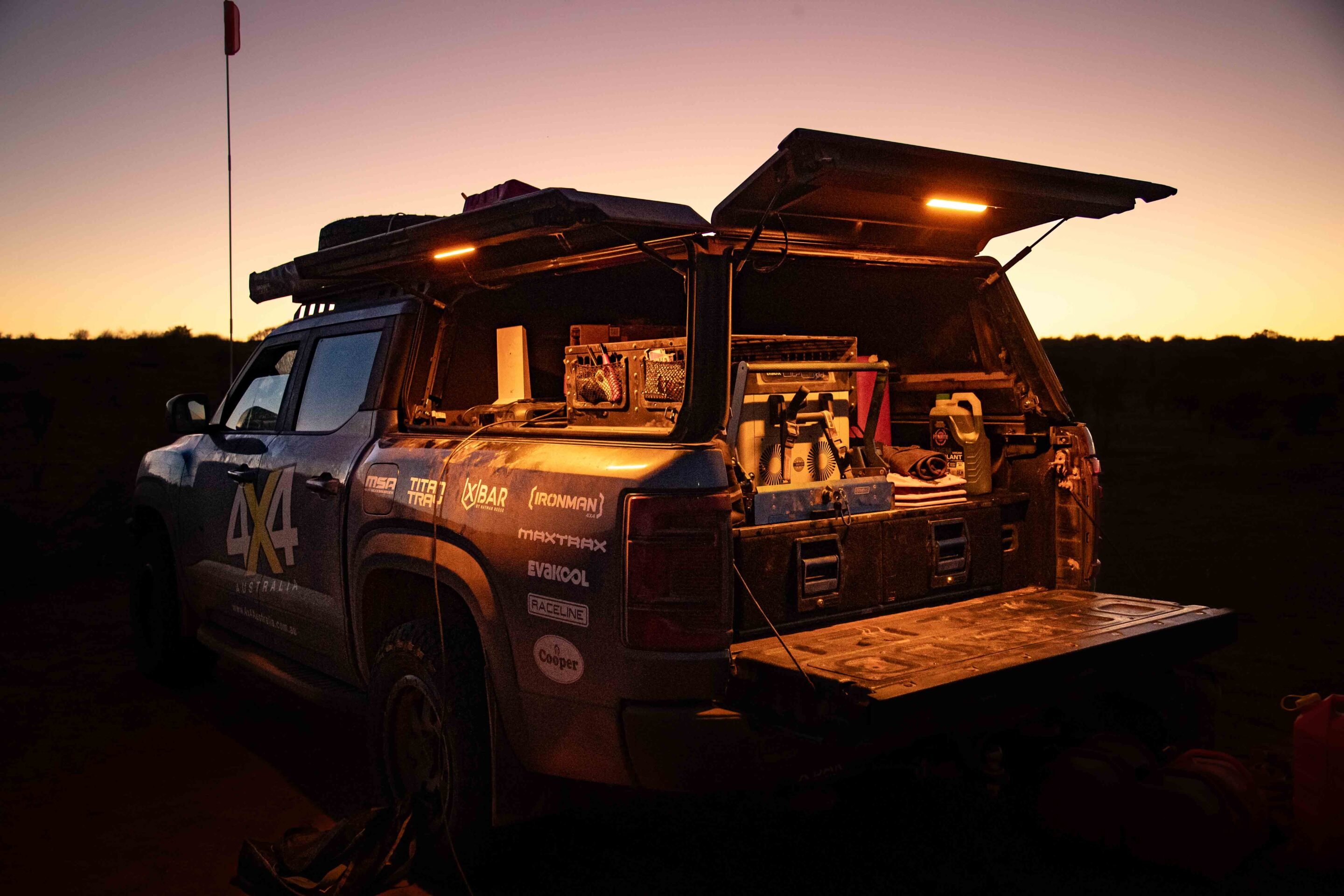
Speaking of Big Red, the Shark made the tallest dune in the Simpson look like child’s play. We’d driven up that dune before, but with the Shark, it felt like you could’ve done it blindfolded. The instant torque off the mark meant it climbed everything without breaking a sweat, drawing a small crowd of surprised onlookers at the summit.
“Didn’t think I’d see one of those up here,” one bloke laughed. Me neither, mate. Everyone commented on how easy it made it look. The only time we got stuck was when we deliberately tried to crawl as slowly as possible – just to test the limits. And even then, it felt like the Shark was laughing at us.
The real kicker, though? The Shark’s off-road mode keeps the engine running until the battery charges to around 70 per cent, so you’ve got maximum power on tap when you need it. It’ll maintain that battery level while cruising, ensuring there’s always a burst of electric torque ready to launch you across a dune or through a tough section.
| Fuel consumption through the desert (L/100 km) | |
|---|---|
| Toyota LC 79 Series | 17.6 |
| BYD Shark | 25.2 |
Comfort vs capability: Electric ute or LandCruiser?
The LandCruiser was everything we expected – a reliable workhorse with a GVM upgrade, canopy, lithium power system and heavy-duty storage.
But after hours behind the wheel, it was also, frankly, punishing. Max’s Terrain Tamer suspension seat helped take the edge off, but the old Cruiser’s ergonomics are what they are – basic and unforgiving. The BYD Shark, on the other hand, was plush and quiet, with that excellent sound system making long stretches a pleasure. When the going was smooth, it was hands-down the nicer place to be. But the further we pushed into remote country, the more cautious I had to be.
Coming out of the desert, the Shark’s electric parking brake developed a fault, which knocked out some of the EV drive modes and disabled cruise control. We jury-rigged a solution – with Max setting the pace in the Cruiser so I could match his speed and keep things consistent.
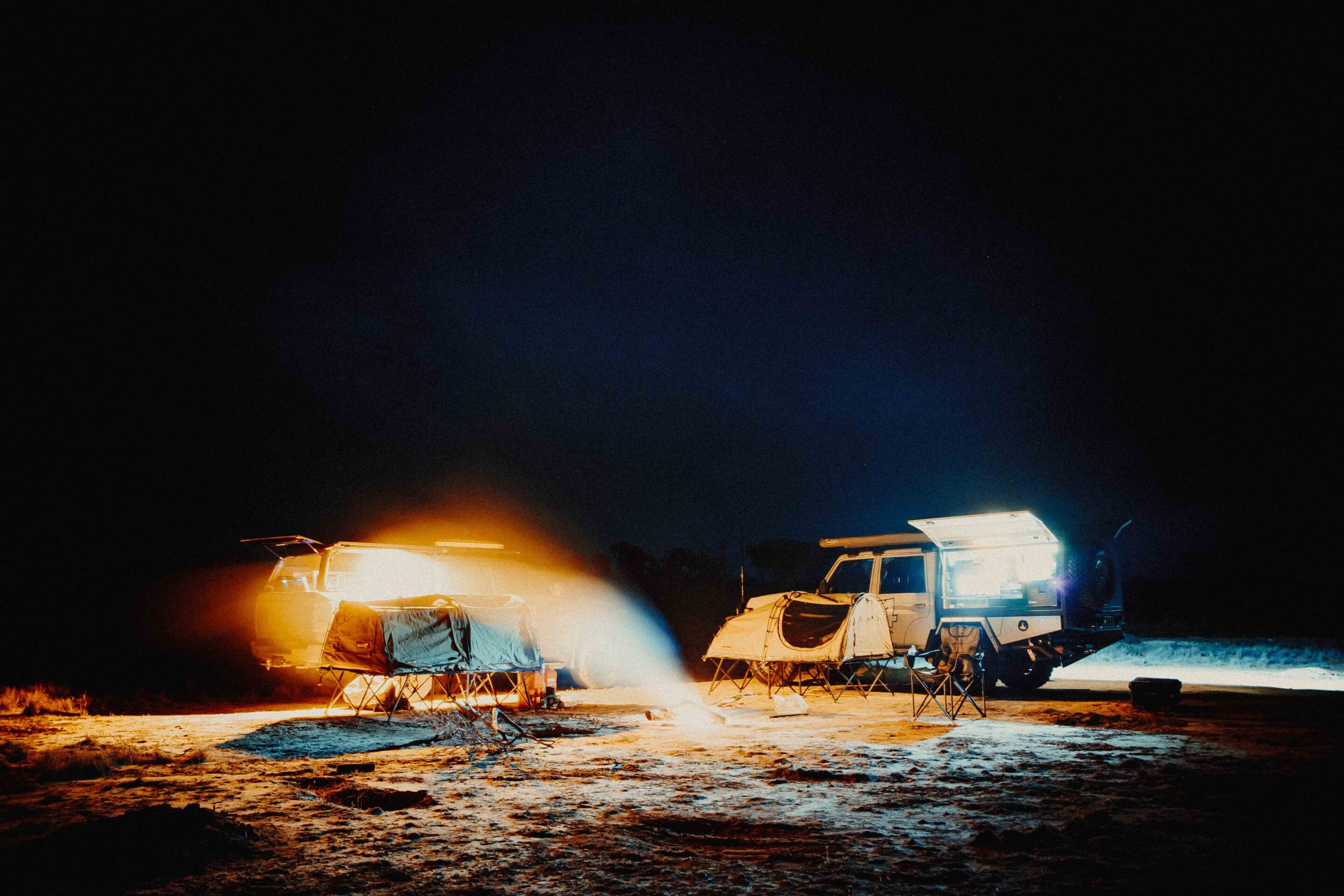
Final verdict: Did the Shark conquer the Simpson Desert?
The BYD Shark did it – and did it while averaging around 20L/100km, putting it right on par with a traditional 4×4.
It crossed the Simpson, tackled a river crossing, climbed countless dunes, survived nights under the stars, and endured enough flies to fill a 65L fridge – all without a major failure. Would I recommend it for a solo Simpson run? Not just yet. The hybrid system still has some limitations for long-range remote travel. Ground clearance, traction control calibration, accessory power management – and that parking brake fault – all need to be addressed before you’d confidently trust it that far from help.
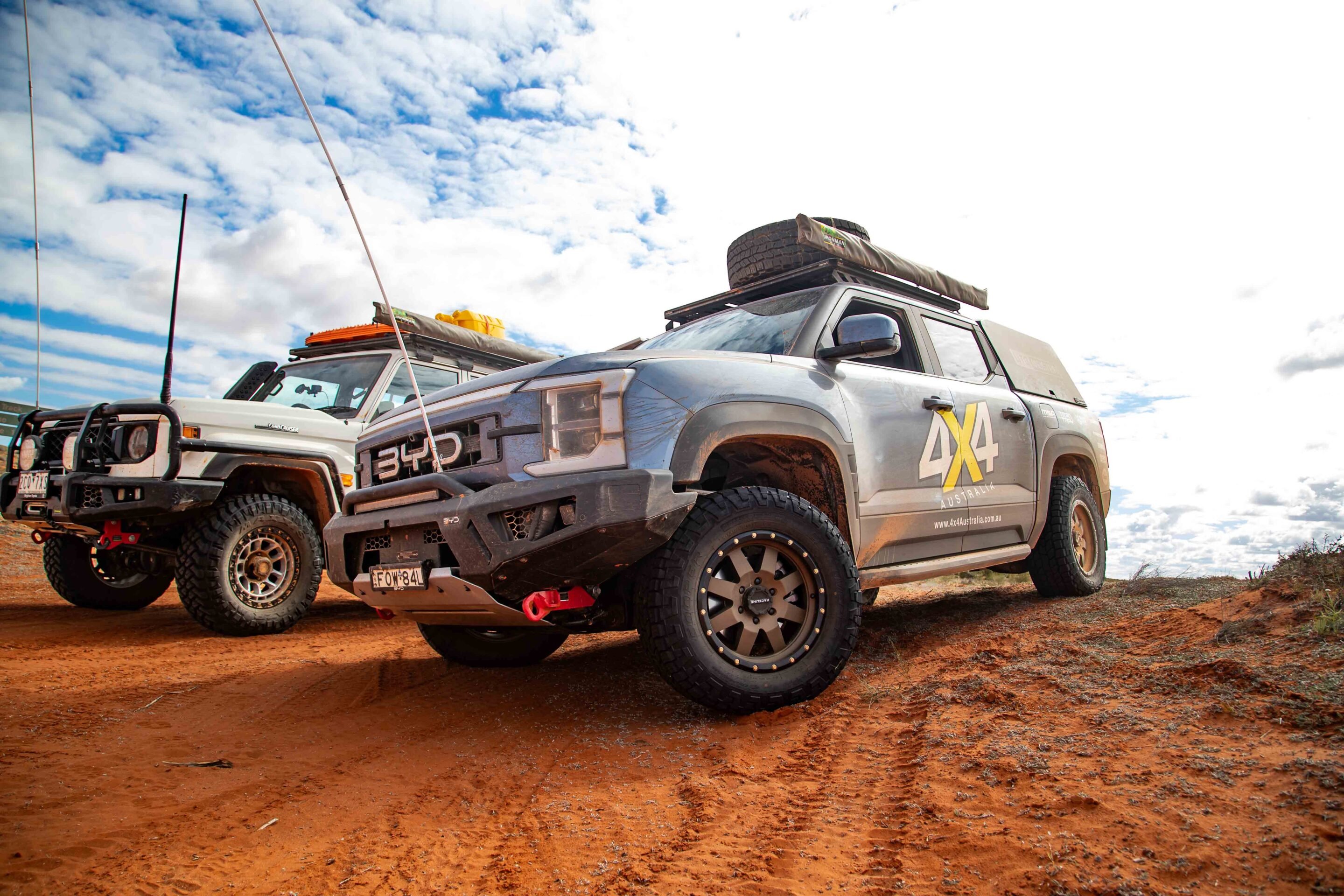
As a first hybrid contender for remote touring, I’m genuinely impressed by the Shark. Technology moves fast. Just two years ago, a trip like this wouldn’t have been attempted in anything but a traditional internal combustion 4×4 – but now, we’re having the conversation. And that’s exciting.
The future of off-road touring in Australia isn’t just diesel vs petrol anymore – it’s hybrid vs electric vs whatever comes next. The BYD Shark has thrown its hat in the ring and made it across the desert.
That’s no small feat. And yes – I guess you can now say the Shark does swim.
Specs
| Price | $57,000 |
|---|---|
| Engine | PHEV; turbocharged petrol engine with electric motors front and rear |
| Capacity | 1.5L |
| Max power | (ICE) 135kw, (EV) 130kw (front) 150kw rear |
| Max torque | (ICE) 260Nm, (EV) 310Nm front, 340Nm rear |
| 4×4 system | Individual between front and rear wheels |
| Construction | 4-door ute on ladder frame |
| Front suspension | Independent, double wishbones with coil springs |
| Rear suspension | Independent, double wishbones with coil springs |
| Tyres | 265/65R18 on alloy wheels |
| Kerb weight | 2710kg |
| GVM | 3500kg |
| GCM | 5750kg |
| Towing capacity | 2500kg |
| Payload | 790kg |
| Seats | 5 |
| Fuel tank | 60L |
| ADR fuel consumption | 2.0L/100km |
| Approach angle | 31 |
| Ramp-over angle | 17 |
| Departure angle | 19.3 |
| Ground clearance | 230mm |
| Wading depth | 700mm |
Things we like
- Super comfortable with intelligent cruise control for relaxed driving
- Powers accessories easily from onboard battery and outlets
- Instant torque makes dune climbs effortless
Not so much
- Small fuel tank limits range; needs 20-40L more capacity
- Long wheelbase and battery cause hang-ups on dunes
- Poor low-speed torque and traction hurt recovery efforts
We recommend
-
 Reviews
Reviews2025 BYD Shark 6 off-road review
The Shark is a stunning first entry into the market, but there’s still room for improvement
-
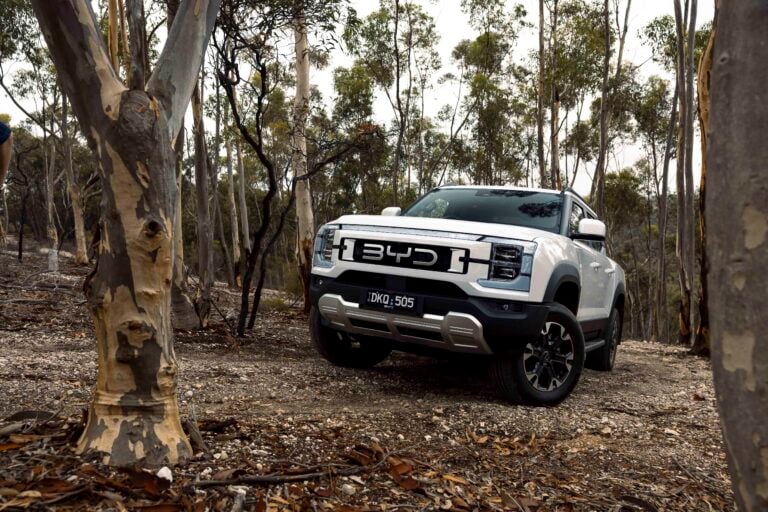 News
NewsBYD records its biggest month of sales in Australia
BYD sales surge in June, setting a new monthly record in Australia for the Chinese marque
-
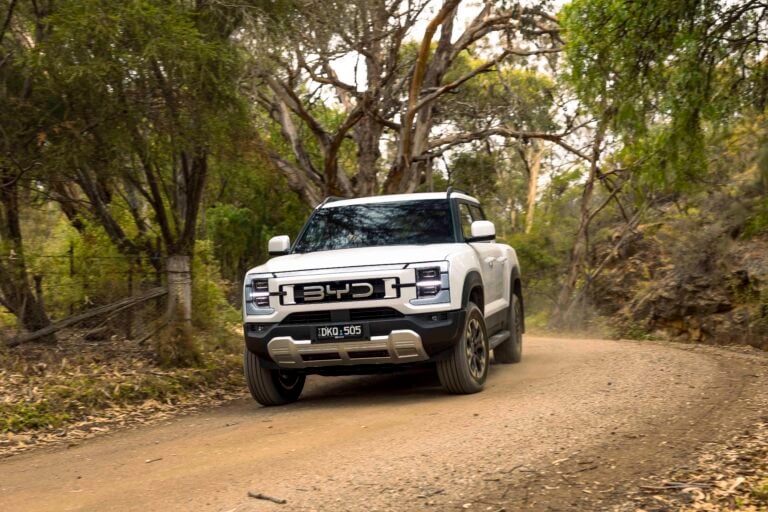 News
NewsBYD ends EVDirect partnership; takes full control of Australian distribution
BYD will take over as the official importer and distributor of its vehicles in Australia from July 2025


